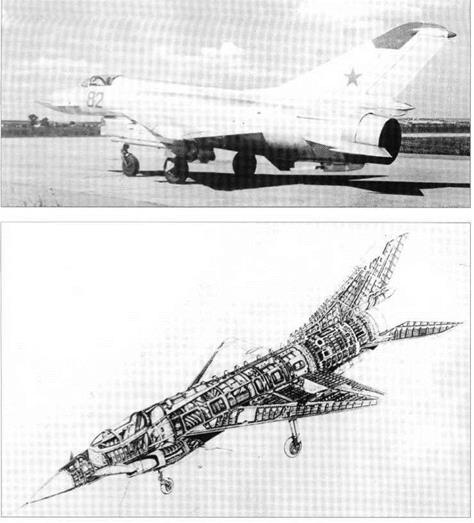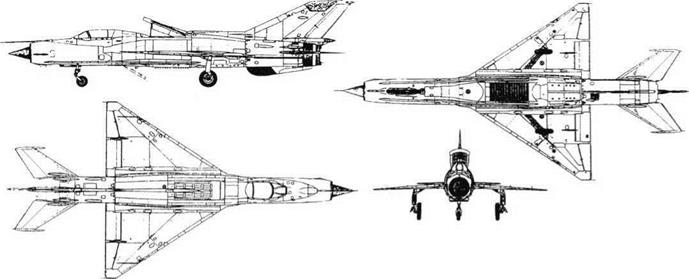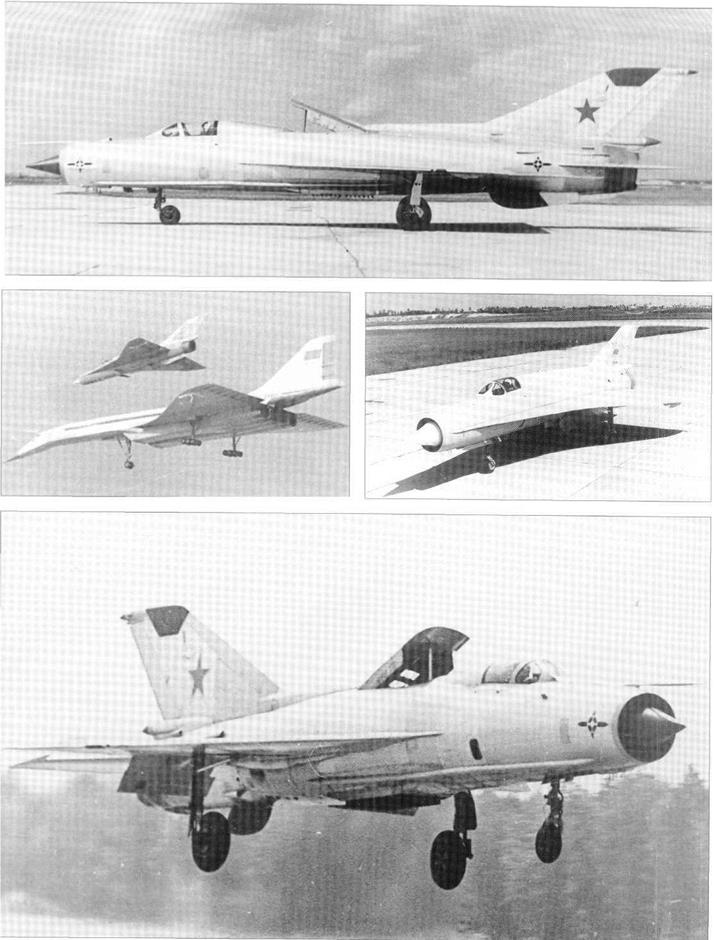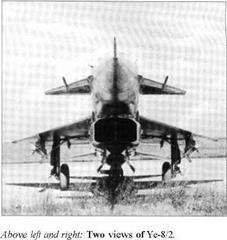MiG-211 (2I-11)
This designation applied to two aircraft ordered from Mikoyan to assist development of the Tu-144 supersonic transport. They were also called MiG-211 (I for Imitator), and Analog. Both aircraft were taken from the assembly line of the MiG-21S, but were powered by a later engine, the R-13-300, rated at 6,490kg (14,308 Ib). This engine could provide a large airflow for blown flaps, but as the Tu-144 (and thus the 2I-11) was a tailless delta no such flaps could be fitted. The wing was totally new, being of an ogival shape with the root chord extending over almost the entire length of the fuselage. The quite sharp leading edge had the remarkable sweep angle of 78°, before curving out to a sweep angle of 55° over the outer wings. There was no droop (downward camber) along the leading edge. On the
trailing edge of each wing were four fully powered surfaces, the inner pair being plain flaps and the outer pair elevens (surfaces acting as both elevators and ailerons). The wing was incredibly thin, thickness/chord ratio being only 2.3 per cent inboard and 2.5 at the tip. Thus, the control-surface power units were faired in underneath, the outer fairings extending over the entire chord of the wing. The wing leading edge was made detachable so that different shapes could be tested. Among other modifications was an increase in fuel capacity to 3,270 litres (719 Imperial gallons), and of course there was no provision for armament. Partly because of a ‘chicken and egg’ situation, in which Mikoyan was uncertain precisely what shape to make the wing, whilst the purpose of the Analog was to teach Tupolev how to design the Tu-144’s wing, the programme ran at least a year too late to assist the design of the SST. Eventually
0 VGudkov flew 23-11/1 on 18th April 1968, withcivilregistrationSSSR-1966, the intended first-flight year. The Tu-144 pilots flew this aircraft before first flying the 44-00 (first Tu-144) on 31st December 1968, with the 23-11/1 accompanying it as chase aircraft. The 23-11/2 differed mainly in that all eight wing movable surfaces were elevens. It was first flown by
1 Volk in late 1969. Later its starboard wing upper surface was tufted, photographed by a camera on the fin (later a second camera was added looking back from behind the canopy). Most of the second aircraft’s flying was done with a large LERX (leading-edge root extension) giving increased area from the new curved front portion. The 2I-11/2 carried out extensive aerodynamic and control research before going to the WS Museum at Monino. The 2I-11/1 was crashed on 28th July 1970 by an LII pilot performing unauthorised low-level aerobatics. Mikoyan did not act on the suggestion of the main 23-11 test pilots that he should develop a fighter version.
Ye-8
So different in appearance as hardly to be considered a MiG-21 version, these two aircraft were considered as prototypes of a possible improved fighter. They resulted from a Kremlin decree of spring 1961 calling for ‘a version of the MiG-21 capable of destroying hostile aircraft at night or in bad weather’. This was intended to become the MiG-23. The key feature was use of the Volkov KB’s Sapfir 21 (Sapphire) radar. This was far too bulky to fit inside any possible MiG-21 nosecone, and the answer was to feed the engine by a completely new inlet under the fuselage. There was an advantage in doing this in that the inlet could be given variable geometry with mov-
|
|

 |
|
|
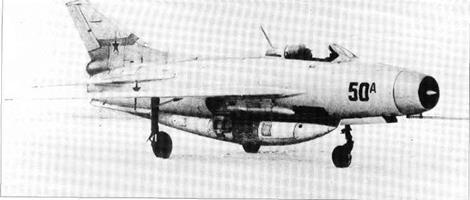
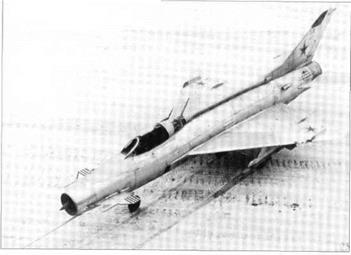

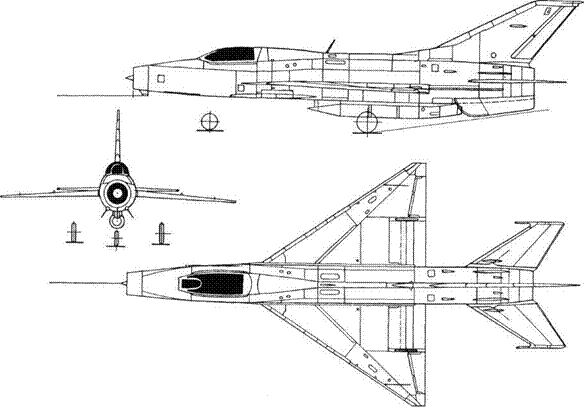
![]()
|
|
|
|
|
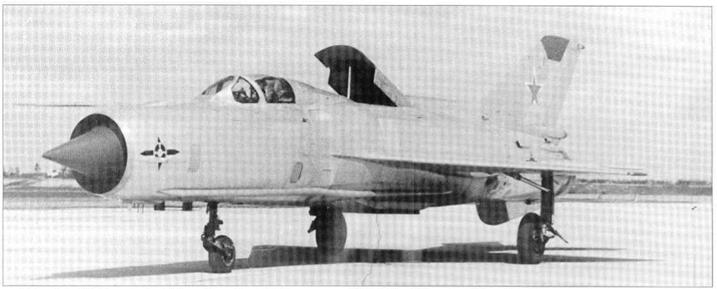
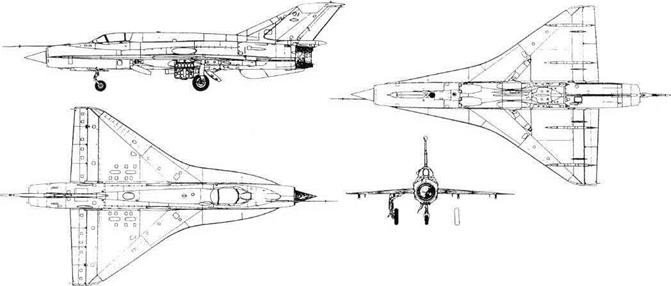
|
|
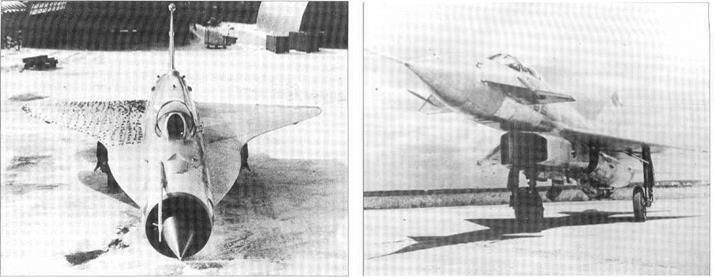
Photographs on the opposite page:
Top: MiG-21PD(23-31).
Centre left: MiG-211/1 with 44-00 (first prototype Tu-144).
Centre right: MiG-211/1.
Bottom: MiG-21 PD (23-31) at Domodedovo Air Parade, July 1967.
Photographs on this page:
Top left: MiG-211/2 with one wing tufted. Top right: Ye-8/2.
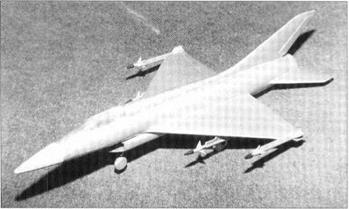 Right: Model of Ye-8 interceptor project.
Right: Model of Ye-8 interceptor project.
|
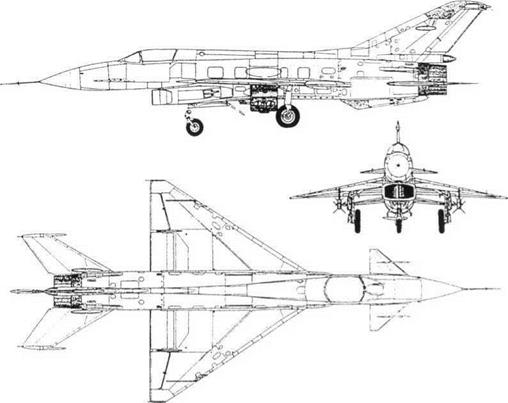
|
